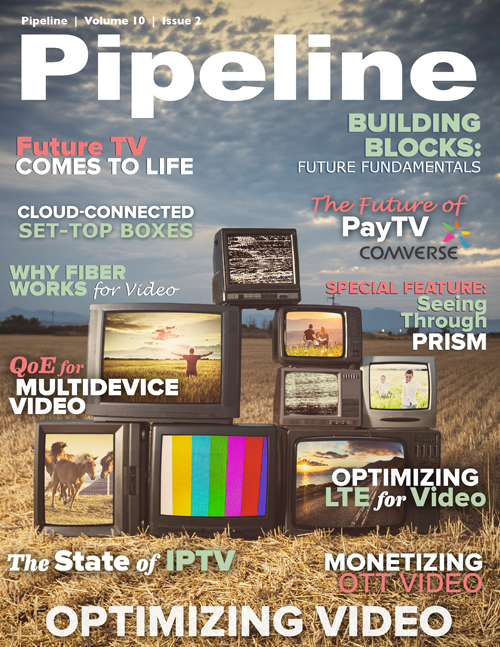Video Building Blocks: Future Fundamentals
The Product Age
Many service providers are adopting a product-oriented approach to centralize their operations around the development of new offerings, which streamlines the development and introduction of new, customer-facing products and their network-facing service counterparts and enables better organizational collaboration, thus expediting the idea-to-cash process. It also facilitates a uniform customer experience by providing a consistent view of products and services across the customer life cycle. Some service providers have taken this approach a step further by leveraging product-catalog systems that propagate important network and service information across the OSS and BSS architecture in real time. But even this product-centric approach is quickly becoming table stakes, and only scratches at the surface of what is possible today or will be required in the near future.
The very concept of services has become somewhat outdated, and what was once thought of as a service, such as voice or video, has become nothing more than an IP-based application. Products have become passé, and bundles will soon be a sign of a bygone era. Today’s customers expect more from their service providers than regurgitated products and service tiers and packages in exchange for locked-in contracts, hidden fees and time-based price increases. They want more access, more personalization, more control, and more innovation.
The Customer Era
As the Product Age draws to a close, the service providers of the future will be much more than access providers. They will be the facilitators of an entirely new era of integrated communications and entertainment services, and that means they will require more than a static product-oriented approach. They will no longer be able to afford to wait months or years for the introduction of new services and will have to respond to customer demands in real time. Tomorrow’s service providers will need a demand-driven architecture, complete with products, services, networks, and enabling technology, that can rapidly shift to provide rich services and integrated connectivity, content and devices, creating a distinctive and personalized customer experience.
Not one, but the combination of all of these elements will be what drives the customer experience in the future, elevating the importance of real-time product-catalog systems and network technology by integrating them with systems that can leverage network information and monitor the customer experience; powerful offerings are dynamically created in the process while time to market (TTM) is shortened and new, enhanced services are introduced more quickly. The collective value of these systems—and, more specifically, how they interoperate with each other—will be the platform that enables service providers and customers to personalize and deliver services how, when and where they are wanted, regardless of the end device.
“Today a best-of-suite product catalog is essential to empowering the customer and service providers,” says Robert Emery, VP of product management and service delivery at ConceptWave, now a part of Ericsson. “Customers expect more control over their service, packages and devices. Service providers must have agility to quickly and dynamically react to customer demands. To do that, a real-time product-catalog system must now be more tightly integrated with the network [and] OSS, BSS and CEM [customer experience management] systems.”
Ericsson (NASDAQ: ERIC) acquired ConceptWave last September, extending its already sizable OSS and BSS footprint. In an Ericsson video in May, Elisabetta Romano, VP and head of OSS and service enablement, spoke about the company’s strategic acquisition, and referred to ConceptWave’s order-management and product-catalog capabilities as “the piece that was missing” within Ericsson as well as the “bridge” between its OSS and BSS portfolios. She added, “The catalog is really a central part for us to support our customers in the digital transformation ... They need to be agile. To be agile means that they need to move from a stove-piped architecture to an open and integrated architecture. And for us, catalog is the way to start this transformation, integrating the billing, assurance, fulfillment, and policy components.”
The truth of the matter is that service providers can’t afford not to integrate product catalog with their networks and OSS, BSS and CEM systems. Service providers who have already implemented this approach are enabling automation from the first point of contact to the fulfillment of services, giving customers more control over their products, services and bundles while streaming the delivery to drive down the cost of fulfillment. But that’s today—tomorrow is a different story.


















